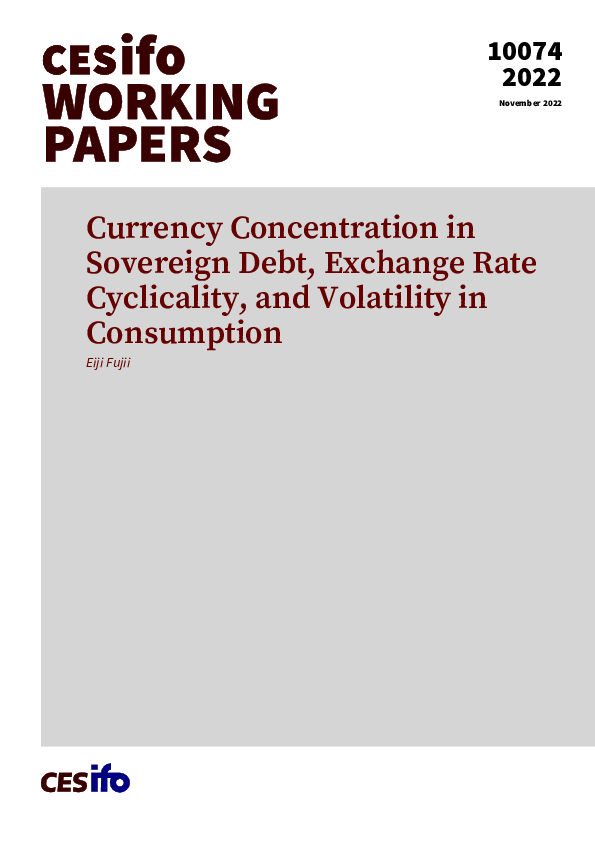Currency Concentration in Sovereign Debt, Exchange Rate Cyclicality, and Volatility in Consumption
CESifo, Munich, 2022
CESifo Working Paper No. 10074

For emerging economies, borrowing abroad is a double-edged sword: it can buffer against adverse economic shocks and smooth their domestic consumption; however, it can also amplify volatility in consumption, depending on the currency in which the debt is denominated and cyclicality in the borrower’s exchange rate. We empirically investigate the nexus among external debt portfolios, exchange rate cyclicality, and volatility in consumption of low- and middle-income countries. Since 1980, many countries have concentrated their external debt portfolios’ currency composition. By constructing debt-weighted effective exchange rates, we find that currency concentration magnifies exchange rate pro-cyclicality, making domestic consumption more volatile when national income fluctuates. Our results endorse diversifying the currency composition of external debt to mitigate the negative consequences of “original sin.”
Monetary Policy and International Finance